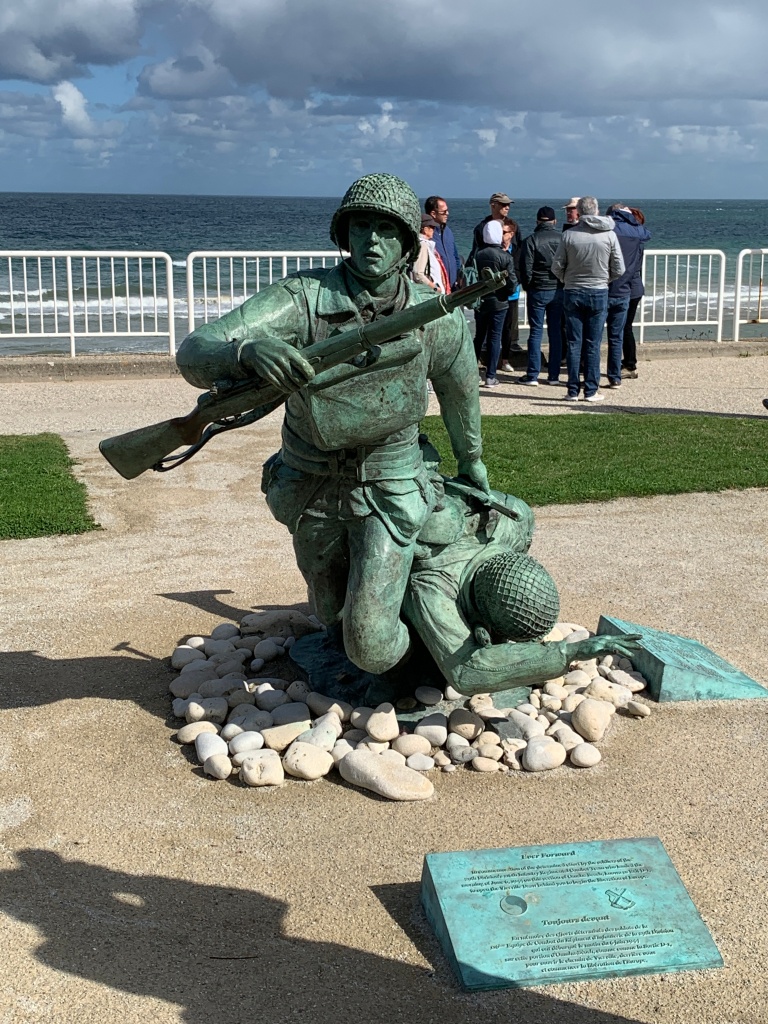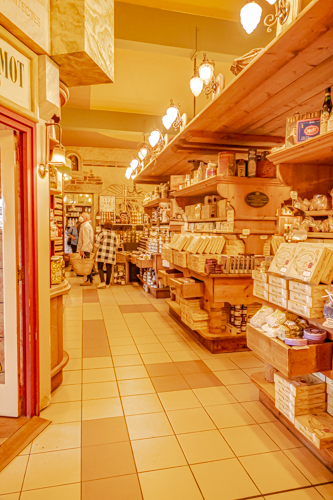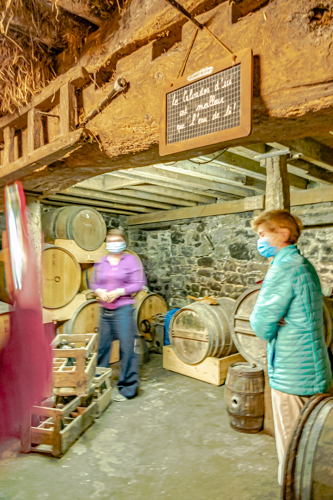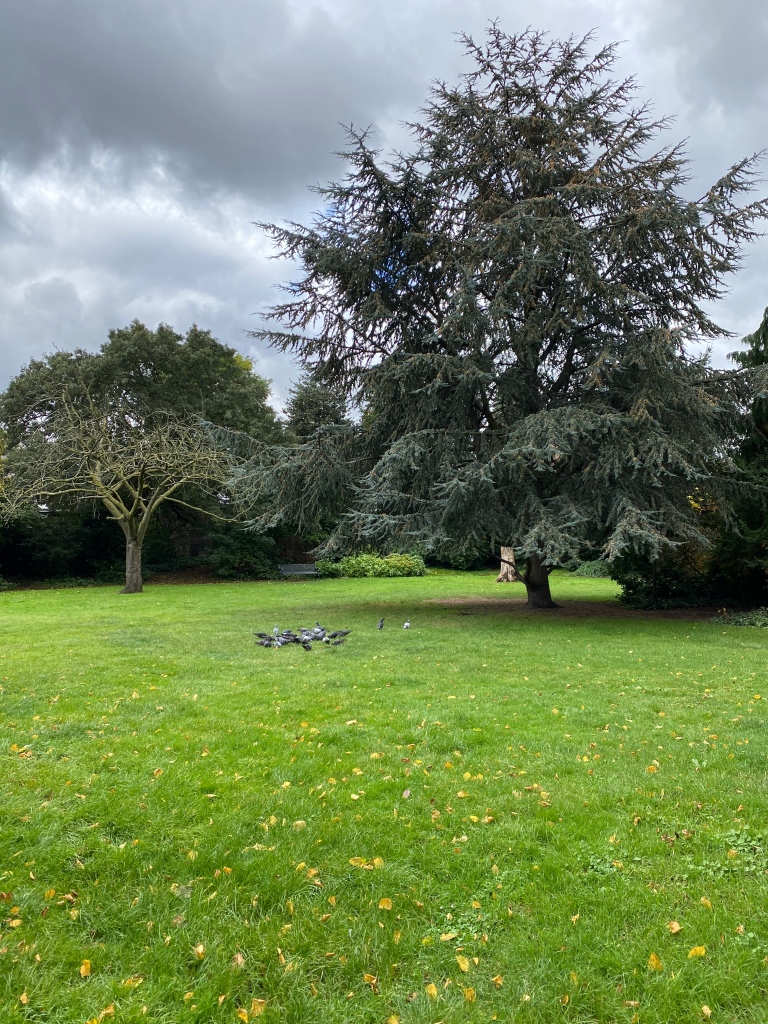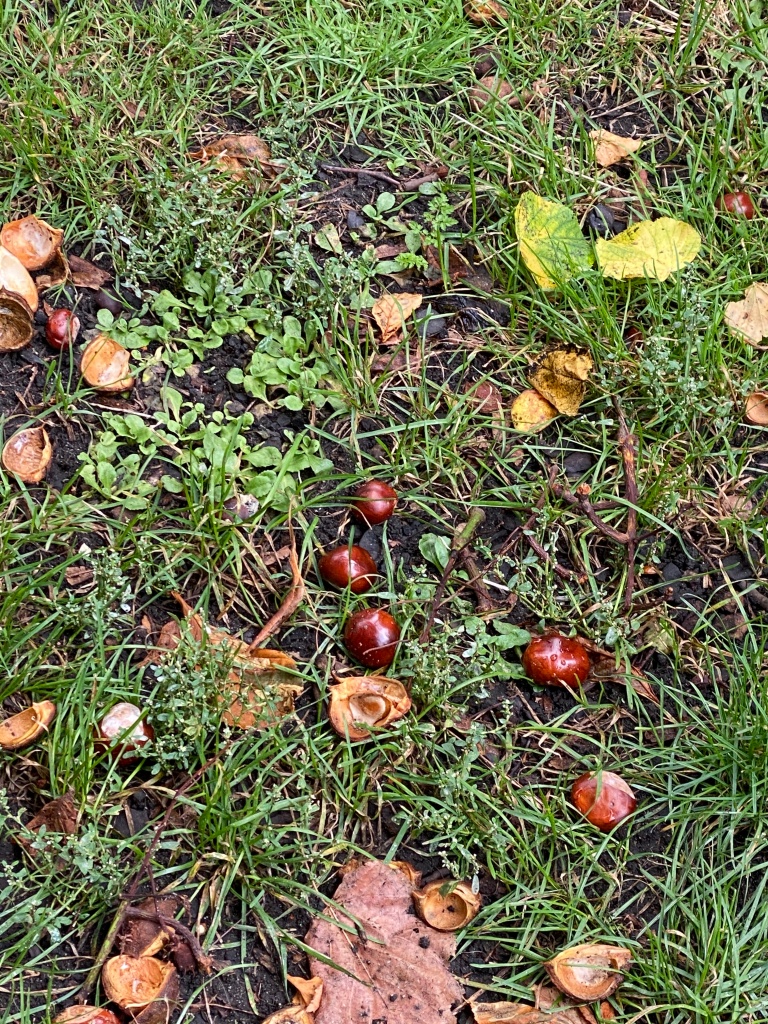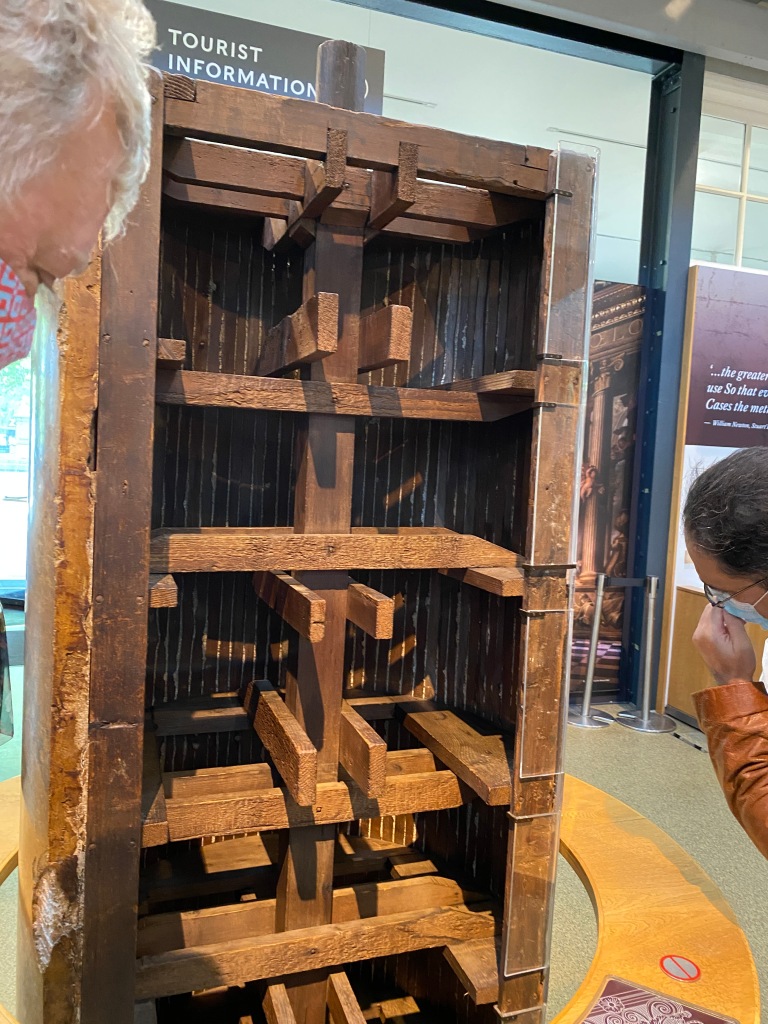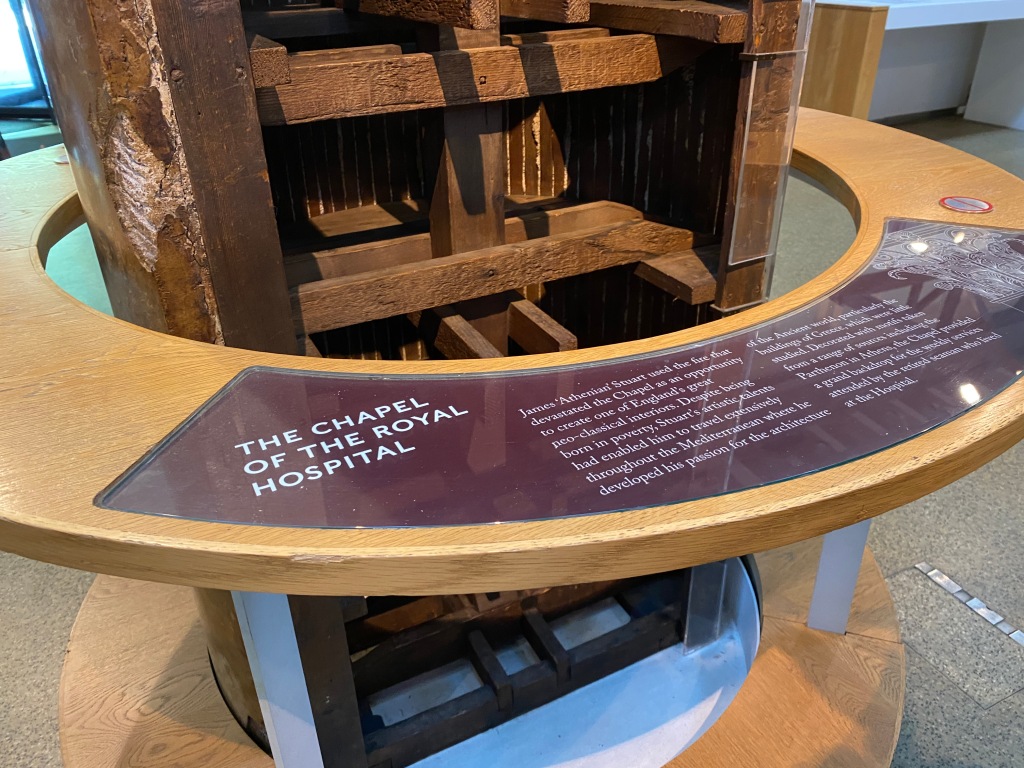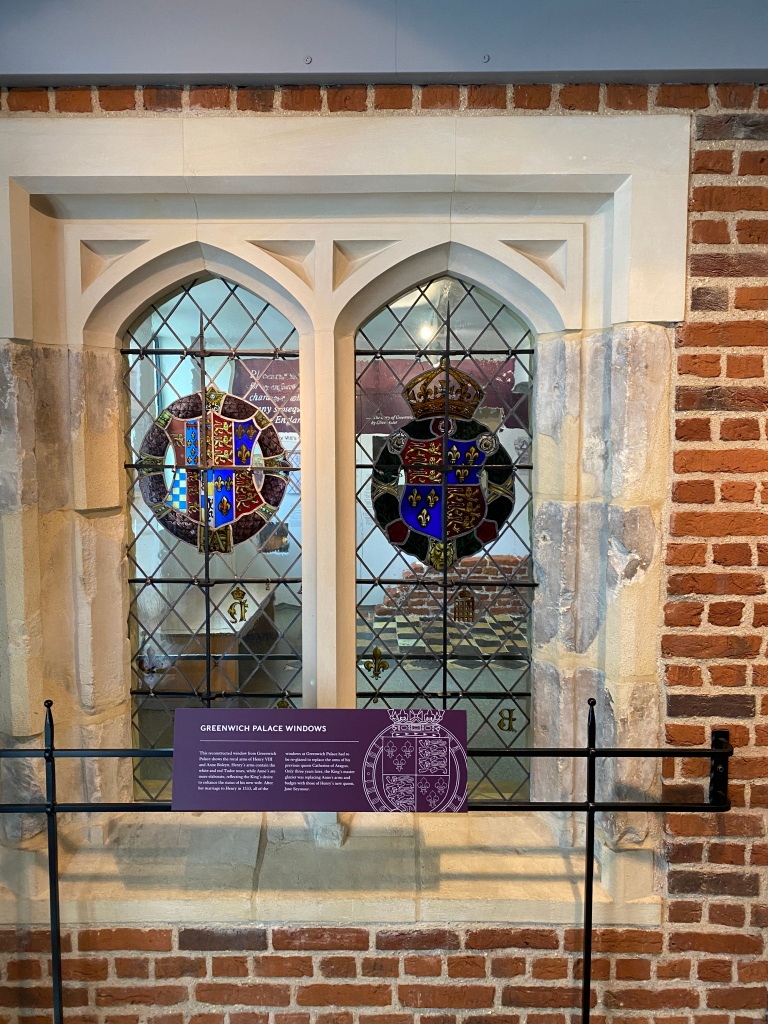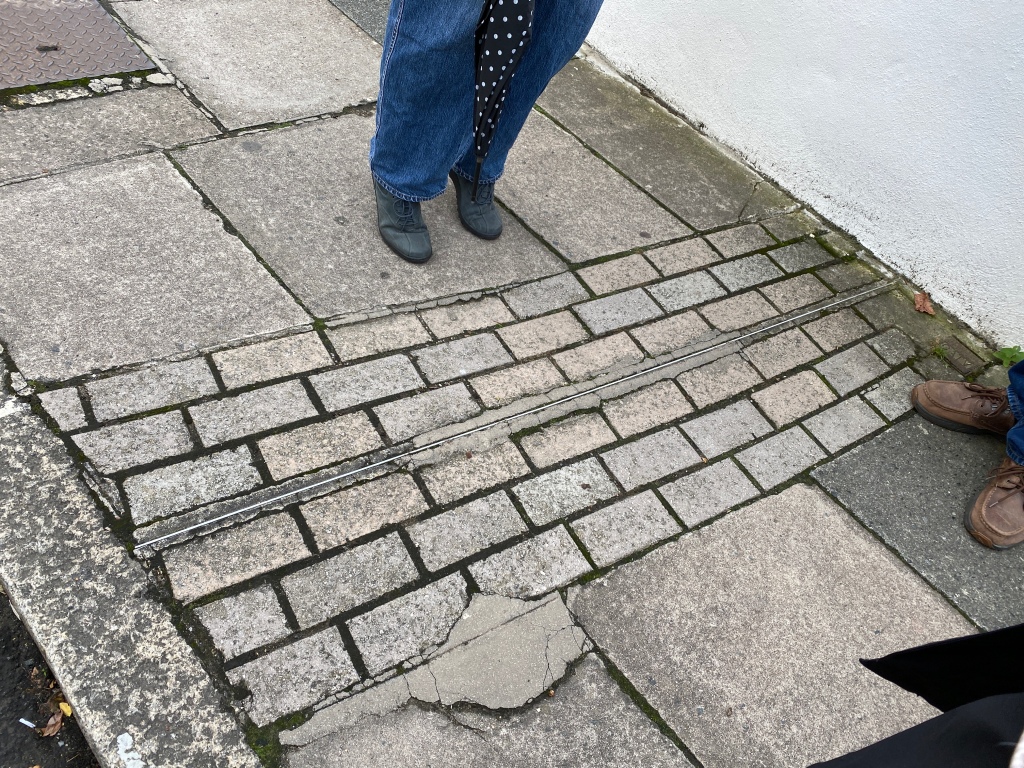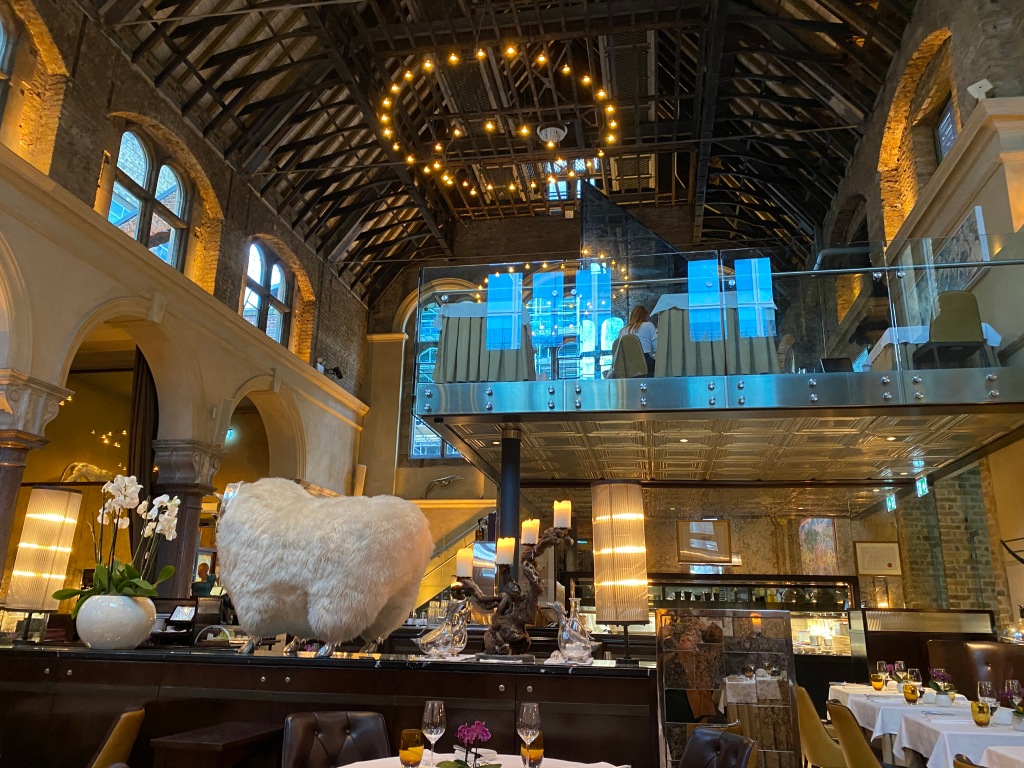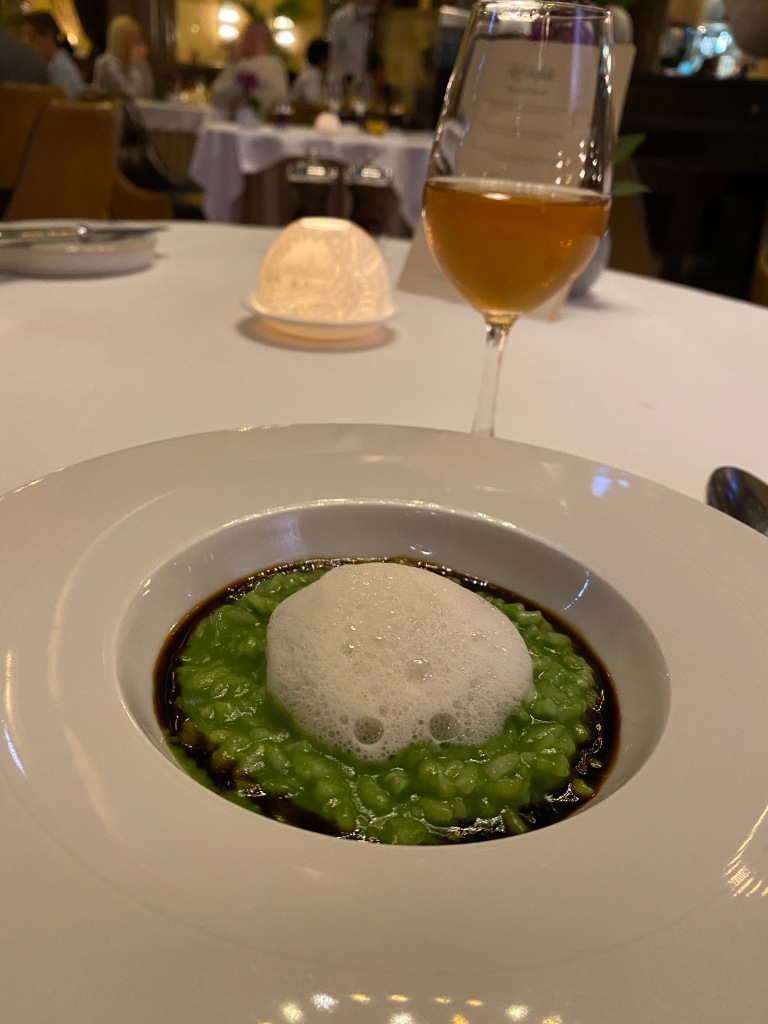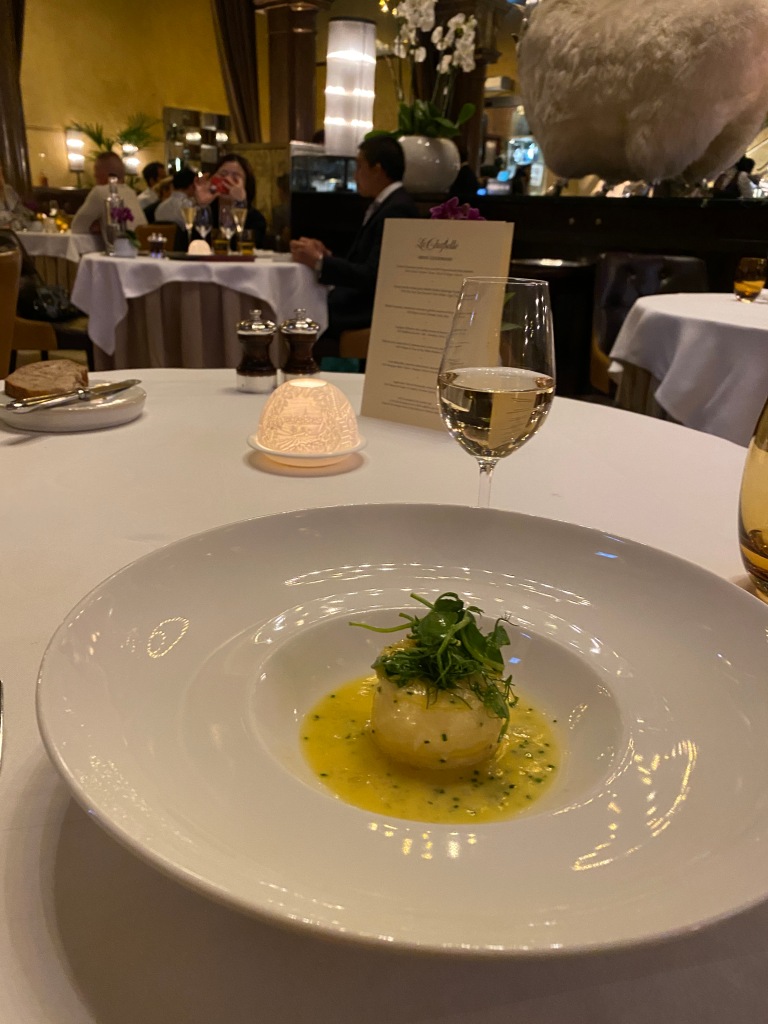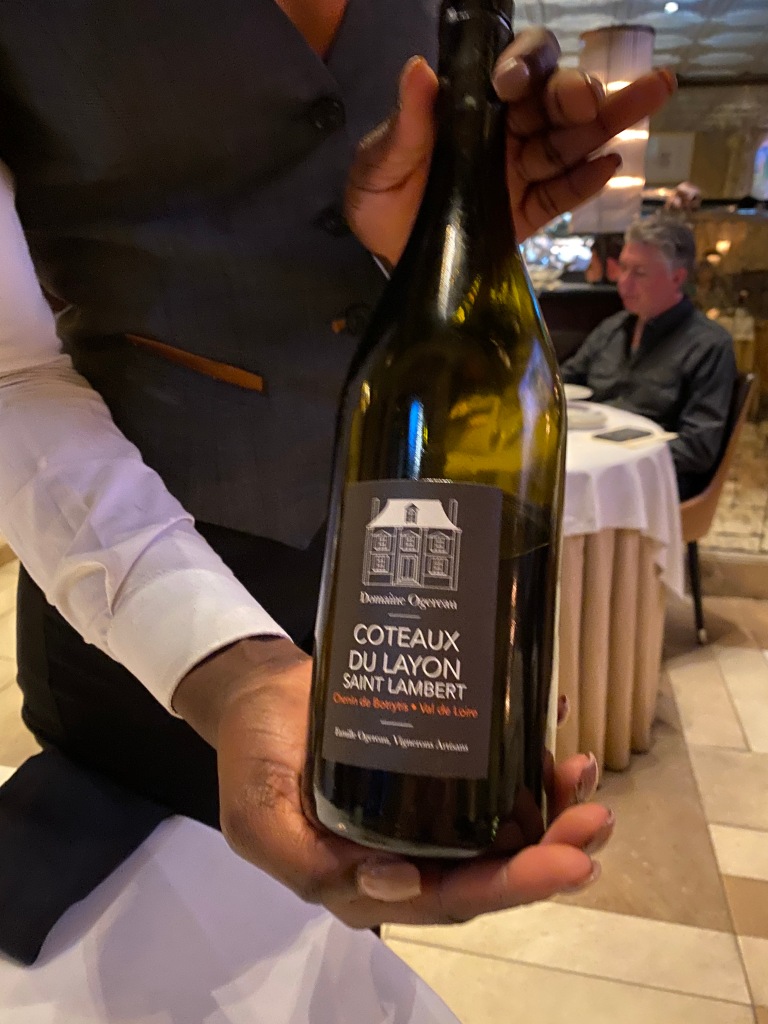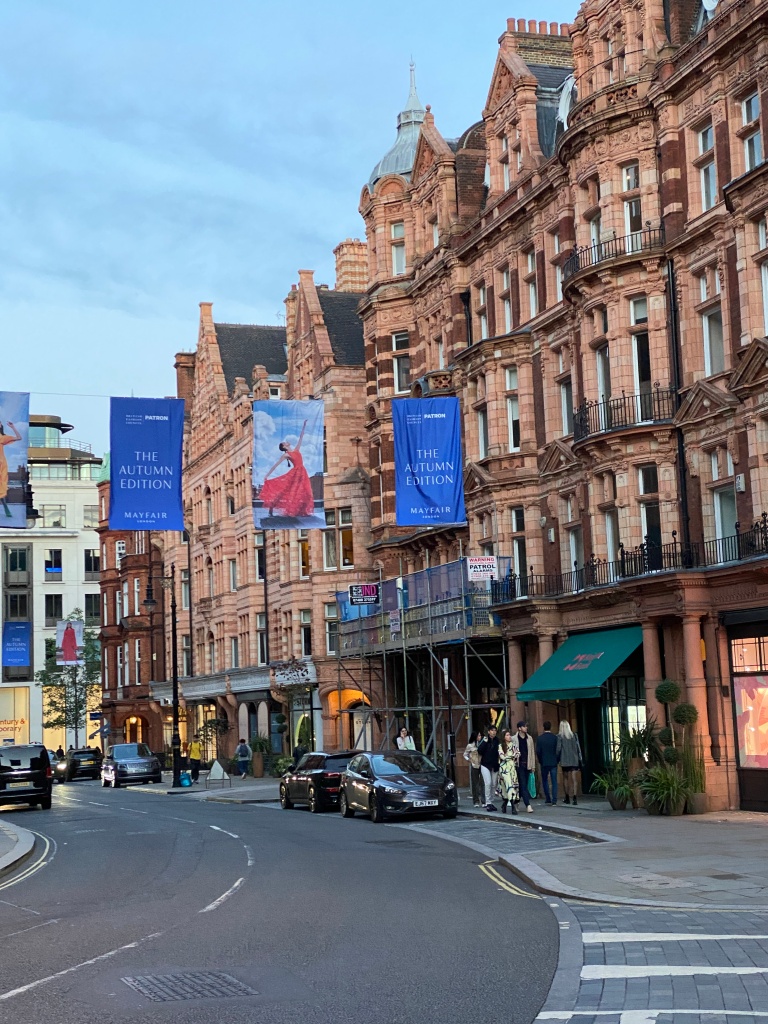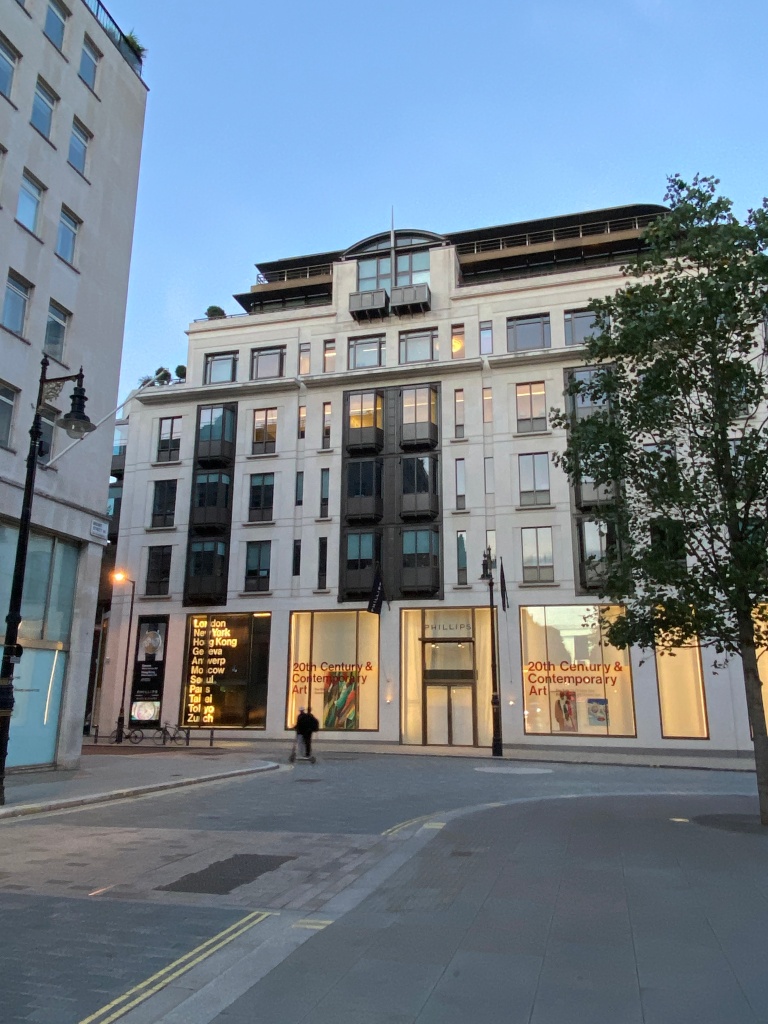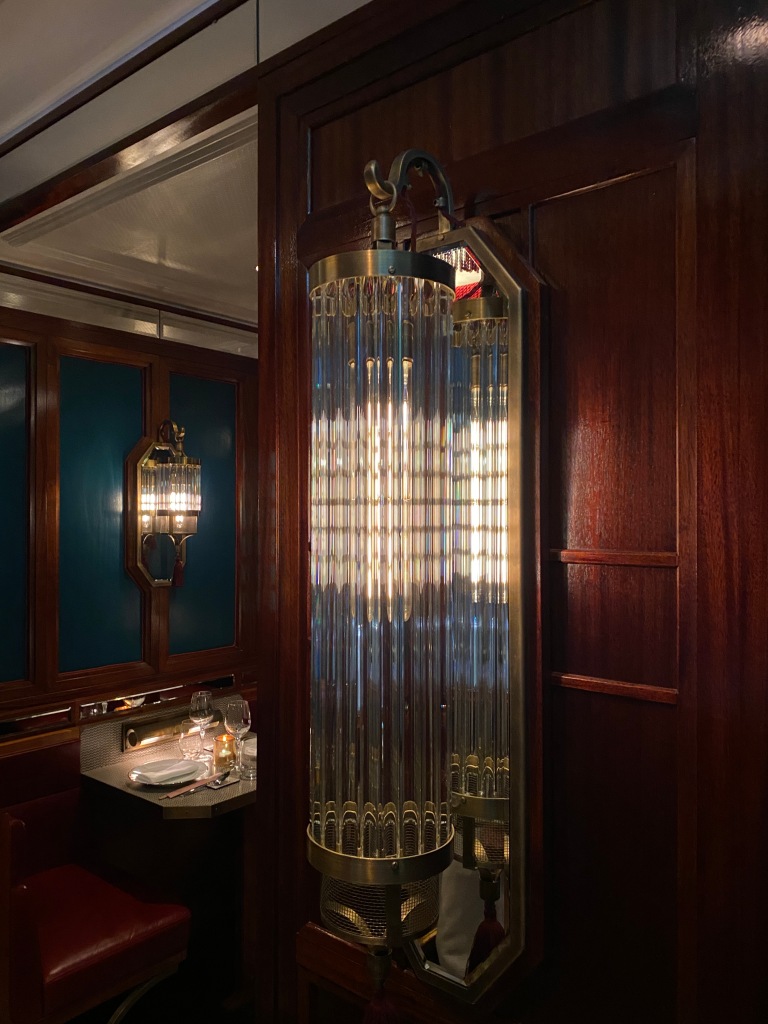September 30, 2021:
On September 30, 2021, our ship anchored off the coast of Brittany. We tendered into the port of Saint Malo, which is a fortified island settled by traders, merchants and privateers. It became a very wealthy town in the Middle Ages. St. Malo is still very popular with the yachting crowd, and it looked darling, but we went to explore the Abbey of Mont-Saint-Michel instead.


Le Mont Saint-Michel is a granite tidal island located about a kilometer off the coast of Normandy at the mouth of the Couesnon River. The river has changed course several times over the centuries which put the island in Brittany and in Normandy at different times. The island sits in the middle of a bay which is 500 kilometers across. At a very high tide, the island is separated from the mainland. The tidal fall is 45 feet (15 meters), which is second only to the Bay of Fundy for greatest tidal fall. The tidal speed is very fast, and runs at about 3.5 kilometers per hour. The island is connected to the mainland by a long causeway bridge, which allows the tides to pass under (and sometimes over) the bridge. Even when the tide is out, the bay is very dangerous because as the tide goes out, tidal waters run through the sands leaving quicksand pools. Many people walk out on the sands, but they only go with registered guides who know the safe routes.

The granite rock on which the Abbey, and the small collection of homes and shops is built, rises 80 meters out of the bay, and the Abbey is another 80 meters high. It is believed that the rock was probably originally the site of Celtic worship, but there is no archeological remains to prove it. Legend has it that in the year 708 A.D., St. Michael, the archangel, appeared in dreams three times to the local bishop of Avranches, Aubert, and told him to build a church on the rock. The first monastery was established on the island in the 8th Century, and the name of the island was changed from Mont Tombe to Mont Saint-Michel. Pilgrims started coming to the island, starting in the 8th and 9th centuries. Vikings captured the island in 847 AD, and trashed much of the existing church and drove the monks out. Rollo, Duke of Normandy, restored and rebuilt the church, and recalled the monks after the Treaty of Saint-Clair-sur-Epte in 911 created the Duchy of Normandy, and established Rollo as its first Duke. The Abbey was then built by an order of Benedictine monks. Rollo’s son, William I, continued financing and building the Abbey.

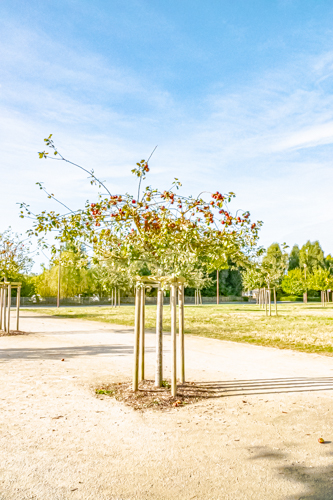







For eight centuries the Benedictine monks managed the Abbey, managed some of the largest states in the area, took care of floods of pilgrims, and wrote beautiful manuscripts. A huge new building was built as an annex to the church on the sea side of the Abby complex which was three stories high: on the top floor the monks were housed; on the second floor, royal visitors and other nobles were housed, the ground floor was kept for common pilgrims. However, following the French revolution in 1793, the monks were expelled and kept off the rock until the 1960s. During that period, the French government used the Abbey and its buildings as a prison. A huge lift was created which was powered by the human labor of the convicts, which could lift several tons oof goods. The contraption worked by the convicts pushing against a huge hamster wheel-like mechanism. The site stopped being used as a prison in 1863.




It was not until the end of the 1960s that the Abbey, which had been listed as a historic monument belonging to the French state, would welcome a new Benedictine community. In June, 2001, the Order of Monastic Fraternities of Jerusalem took over the management of the Mont Saint-Michel, and still its monks and nuns still inhabit the Mont.



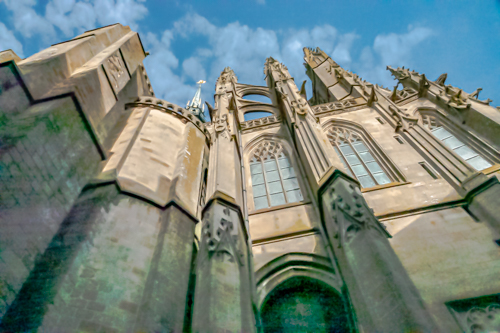
To climb from the causeway all the way up into the Abbey is a process that climbs probably close to 300 feet in altitude,and takes over 400 steps. It is difficult walking on ancient stone staircases, so people with mobility issues should probably not attempt the hike. However, from the top of the Abbey grounds, you can look out in 360° all around at the estuary and tidal flats surrounding the Mount Saint-Michel. It is an awesome site! The oldest parts of the church and the Abbey demonstrate typical features of Gothic architecture including flying buttresses and innumerable gargoyles.


The Benedictine monks who inhabited the Abbey for eight centuries practiced a very Spartan lifestyle. They ate only two meals a day, did not converse, and spent much of the rest of their time in contemplation or in prayer. In the very early years of the monastery, the monks are believed to have written illustrated manuscripts, however, with the advent of the printing press, that practice was no longer continued by the early 1300s.




The whole time of our visit as we walked through all of the associated buildings on the Mont Saint-Michel, we marveled at the architecture and its preservation over the centuries to modern day. I found the cloister area particularly peaceful.


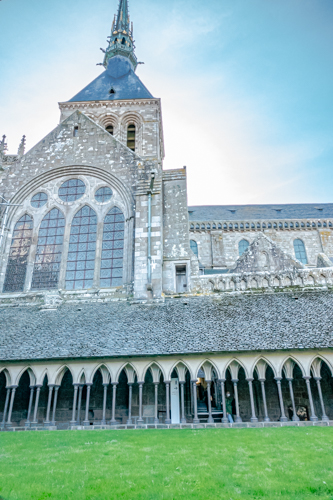


However, after a strenuous hike around the buildings, we were more than ready for lunch. Jim and I found a tavern in the town below the Abbey serving mussels and french fries (moules frites), and devoured them with indecent haste. I confess, we both had a nap on the bus back to Saint Malo. Saint Malo looked like an awesome medieval town with walled ramparts, and we challenged ourselves to visit again someday to explore its wonders. Stay tuned, for tomorrow we visit the seaside town of Concarneau , still in Brittany, France.










